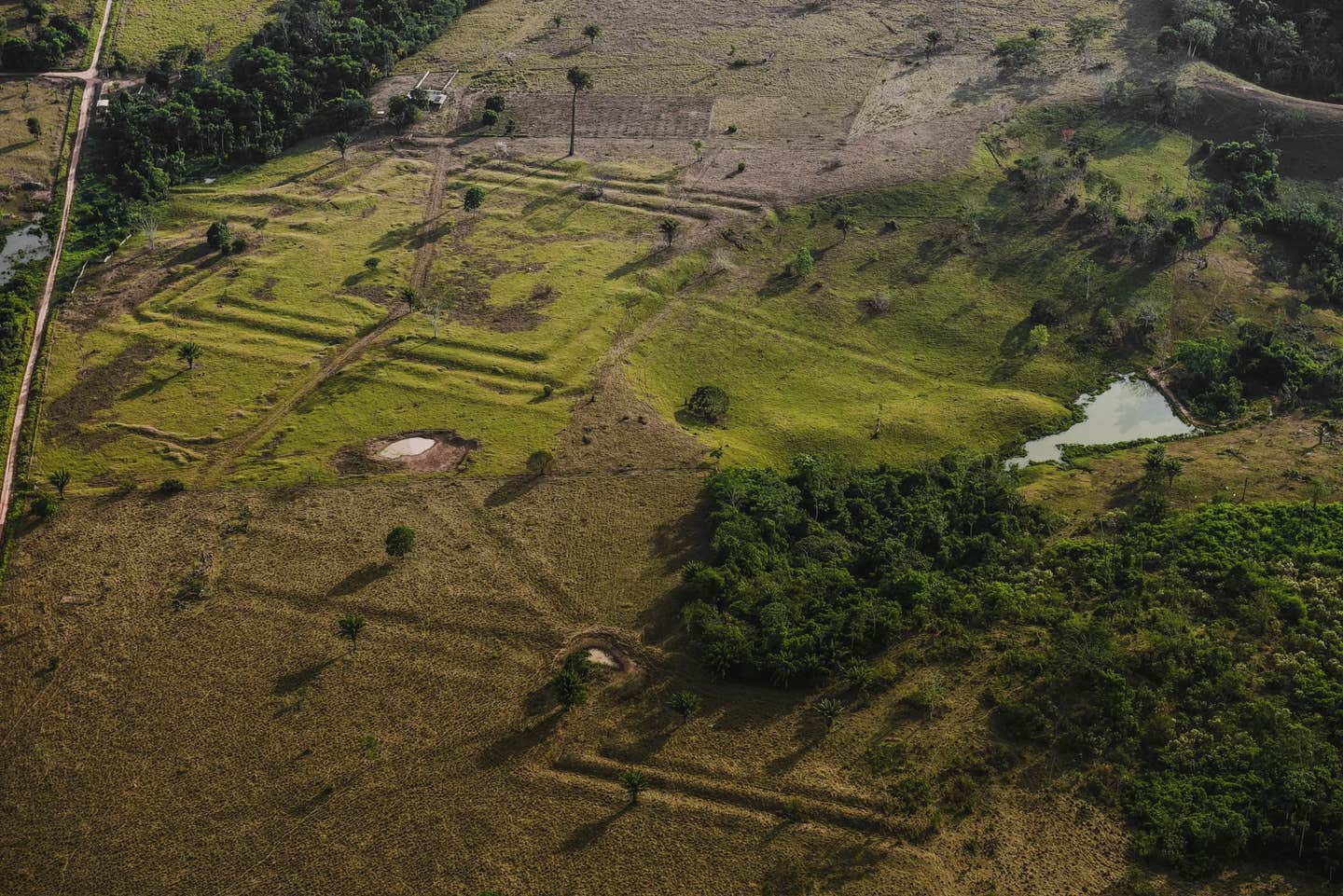Researchers uncover ancient network of cities hidden in the Amazon rainforest
In the thick green depths of the Amazon, long thought to be untouched wilderness, a stunning discovery has emerged.

In Brazil’s Acre state, the Tequinho geoglyph marks what was once a ceremonial hub, connected by straight roads that stretched up to 50 miles through dense rainforest. (CREDIT: Diego Gurgel)
In the thick green depths of the Amazon, long thought to be untouched wilderness, a stunning discovery has emerged. For decades, the rainforest was seen as too hostile for ancient urban life. But that idea no longer holds.
New research reveals a vast network of ancient settlements, hidden beneath the canopy for over 2,500 years. Published in Science, the findings show that large, complex communities once thrived in this region. Their achievements rival those of better-known ancient civilizations.
Deep in the Upper Amazon, near the eastern foothills of Ecuador’s Andes, these settlements tell a different story of Amazonian history. The area features broad roadways, monumental buildings, and advanced farming systems. These weren’t small villages—they were part of an organized, urban civilization.
More than twenty years of fieldwork, mapping, and digging brought this lost world to light. Archaeologists combined old clues with new tools to uncover what had been buried in plain sight. Their work reveals how humans shaped the forest, not just lived in it.
A Forgotten Urban Network
Research in the region began in the 1980s, when early archaeologists found large mounds and structures. But the biggest leap came with LIDAR—light detection and ranging. This airborne scanning tool mapped 300 square kilometers of forest floor, uncovering the largest known urban network in Amazonia.
Stéphen Rostain, the study’s lead author and director at France’s National Center for Scientific Research, called it “a lost valley of cities.” The scans revealed at least 15 connected settlements. Roads ran up to 20 kilometers long and 10 meters wide, weaving together distant communities.
Related Stories
Over 6,000 earthen platforms stood among these roads—some likely homes, others public buildings or ceremonial spaces. Terraced fields, canals, and ditches surrounded the platforms, showing careful design. Everything pointed to a society that didn’t just adapt to the rainforest—it built within it, and thrived.
The settlements supported a dense population, estimated at 10,000 to 30,000 people during their peak. Rostain emphasized the scale and complexity of these communities, comparing them to Roman-era London.
Antoine Dorison, a co-author, noted the population density and societal sophistication, highlighting the site's significance in understanding early Amazonian urbanism.
A Society Shaped by Agriculture and Rituals
The pre-Hispanic inhabitants of these settlements, belonging to the Kilamope and later Upano cultures, were sedentary agrarian societies. They cultivated maize, beans, manioc, and sweet potatoes in fertile volcanic soils, capable of yielding up to three harvests annually even today. Starch grain analysis from pottery suggests they brewed chicha, a sweet beer, in elaborately decorated vessels.
Excavations uncovered domestic artifacts such as grinding stones, jars, and burnt seeds. Postholes, hearths, and intentional artifact deposits indicate that construction often included ritual activities. These findings reveal a culture deeply connected to its environment, shaping the land not only for survival but also for ceremonial and social purposes.
Rituals may have played a significant role in their architectural practices. The evidence suggests at least five distinct cultural phases, starting around 500 BCE. Despite interruptions, the communities demonstrated resilience, reoccupying and repurposing structures over centuries.
The settlements faced challenges from their volatile environment, particularly the nearby Sangay volcano. Towering over the region at 5,230 meters, Sangay’s eruptions significantly impacted the communities. Major debris avalanches from the volcano altered the landscape, yet human settlements persisted on these deposits.
The hypothesis that the Upano culture ended abruptly due to a volcanic eruption between 400 and 600 CE has been reconsidered. Radiocarbon dating shows varied timelines, suggesting that while eruptions affected the communities, they did not entirely destroy them. This resilience underscores the adaptability of these societies in the face of natural disasters.
Redefining Amazonian History
This discovery challenges long-standing assumptions about Amazonia as a wilderness untouched by urban development. Unlike the stone-built cities of the Inca, Amazonian civilizations used mud as their primary building material, leaving fewer enduring traces.
José Iriarte, an archaeologist not involved in the study, compared this revelation to discovering another Mayan civilization but emphasized the unique cultural and architectural characteristics of the Amazonian settlements.
The findings highlight the dual heritage of Amazonia—its natural richness and its vibrant Indigenous history. They urge a reevaluation of preconceived notions, recognizing the region’s cultural complexity and the ingenuity of its ancient inhabitants.
The study’s authors hope their work will inspire further exploration and appreciation of the Amazon’s rich past. As Rostain put it, this research reveals "a staggering complexity and diversity" within a world that remains largely unexplored.
This remarkable urban network serves as a testament to the achievements of pre-Hispanic Amazonian societies. Their story, long buried beneath the rainforest canopy, reminds us of the depth of human history waiting to be rediscovered.
Note: Materials provided above by The Brighter Side of News. Content may be edited for style and length.
Like these kind of feel good stories? Get The Brighter Side of News' newsletter.



